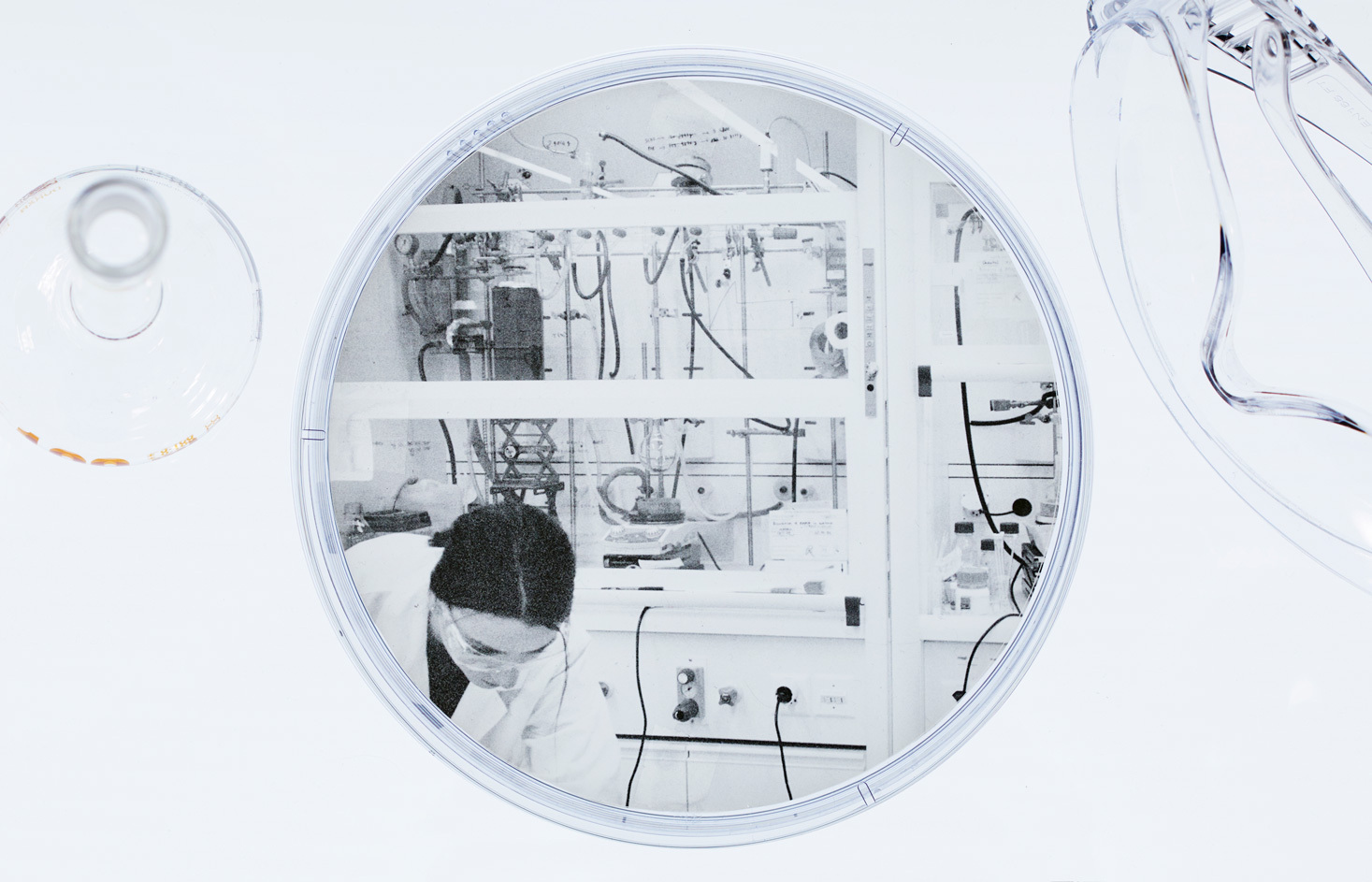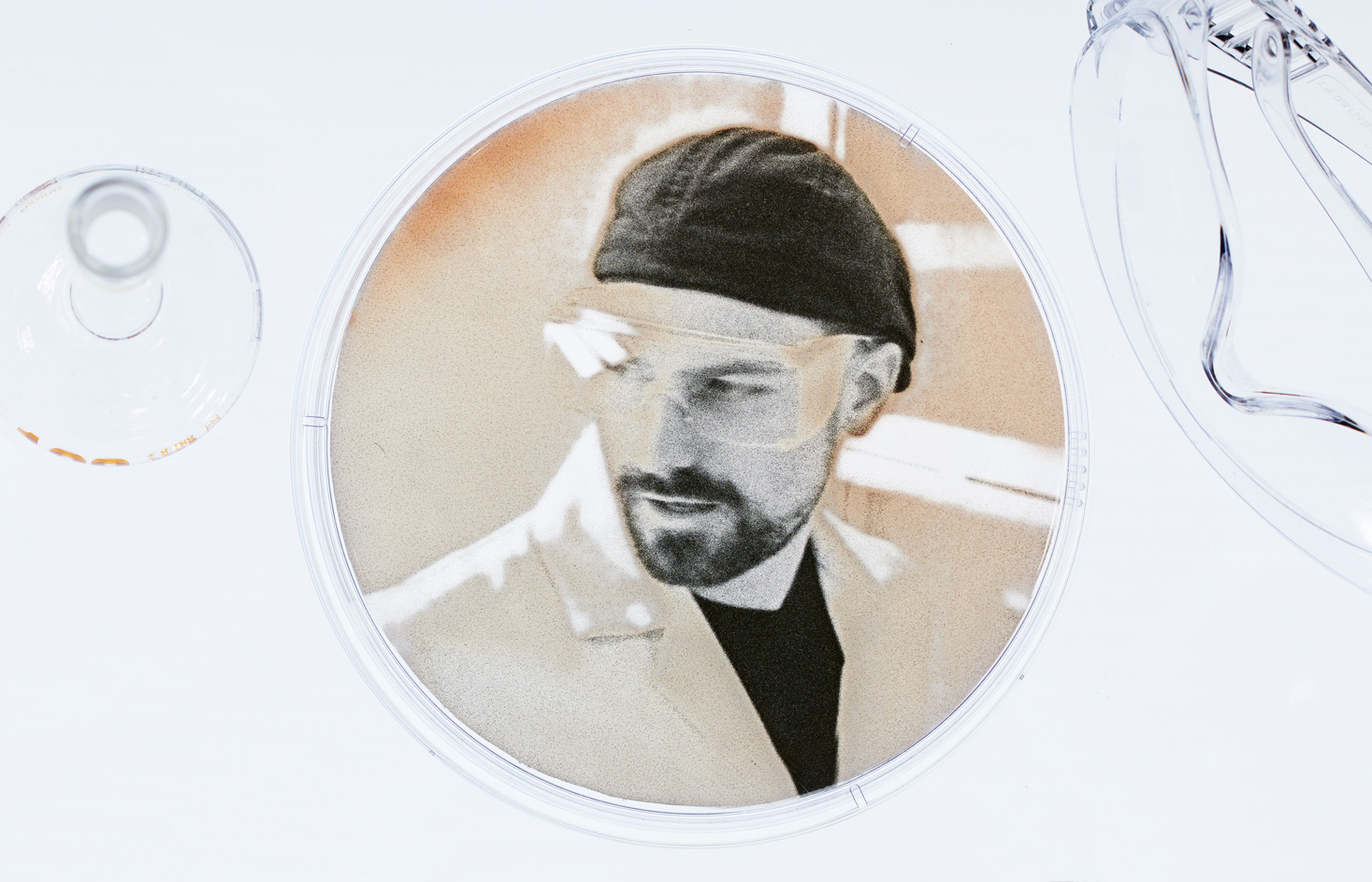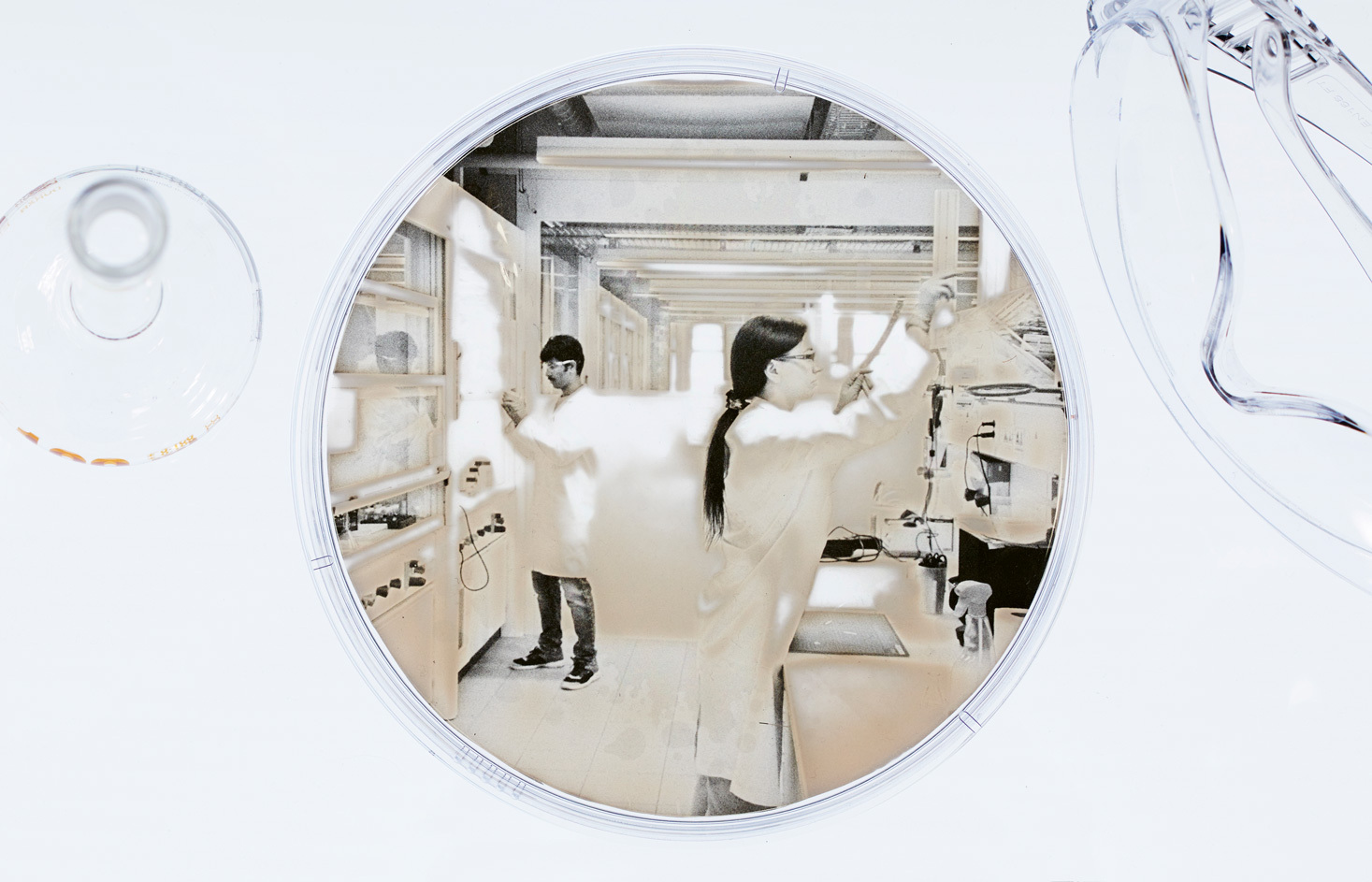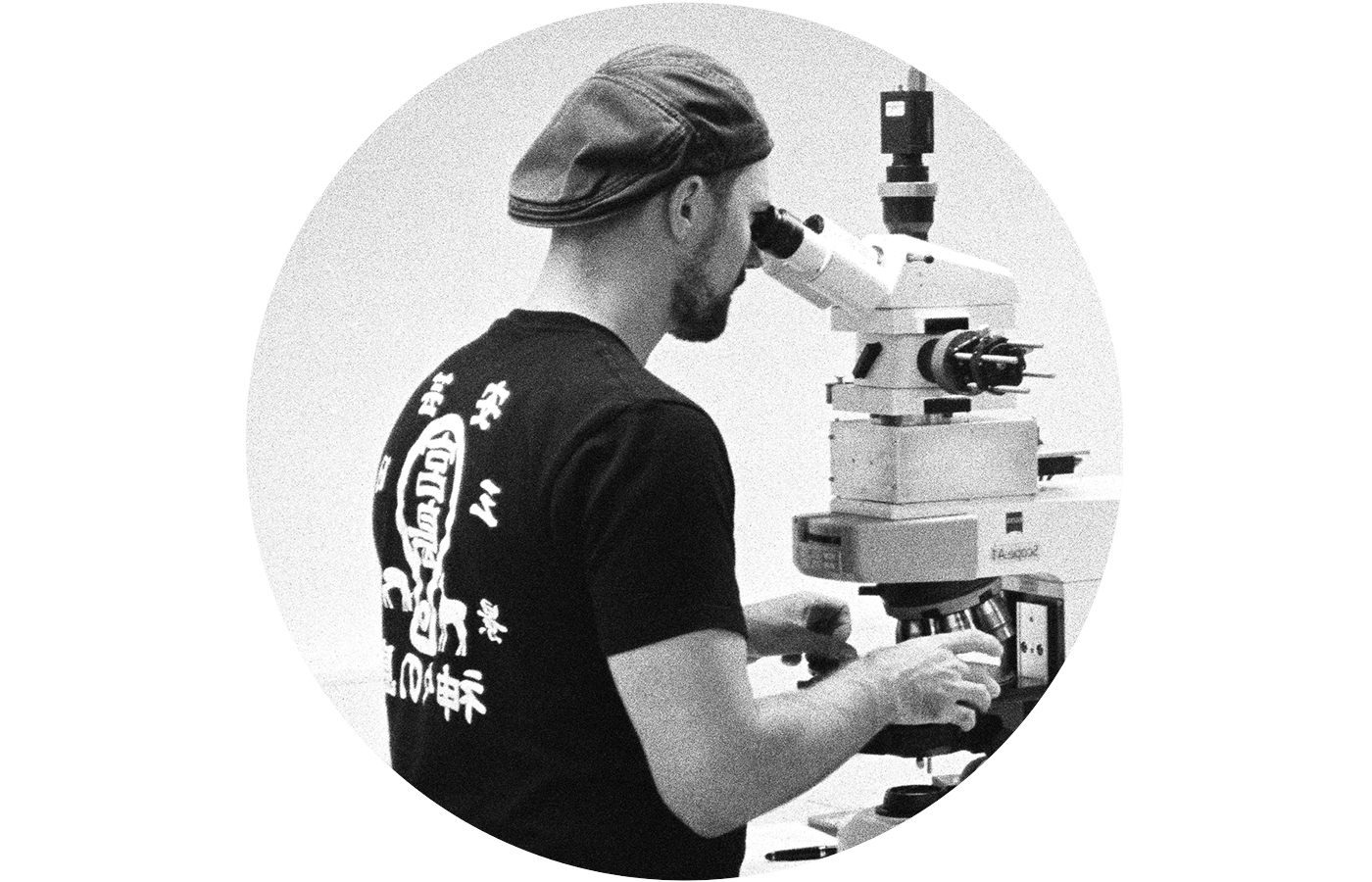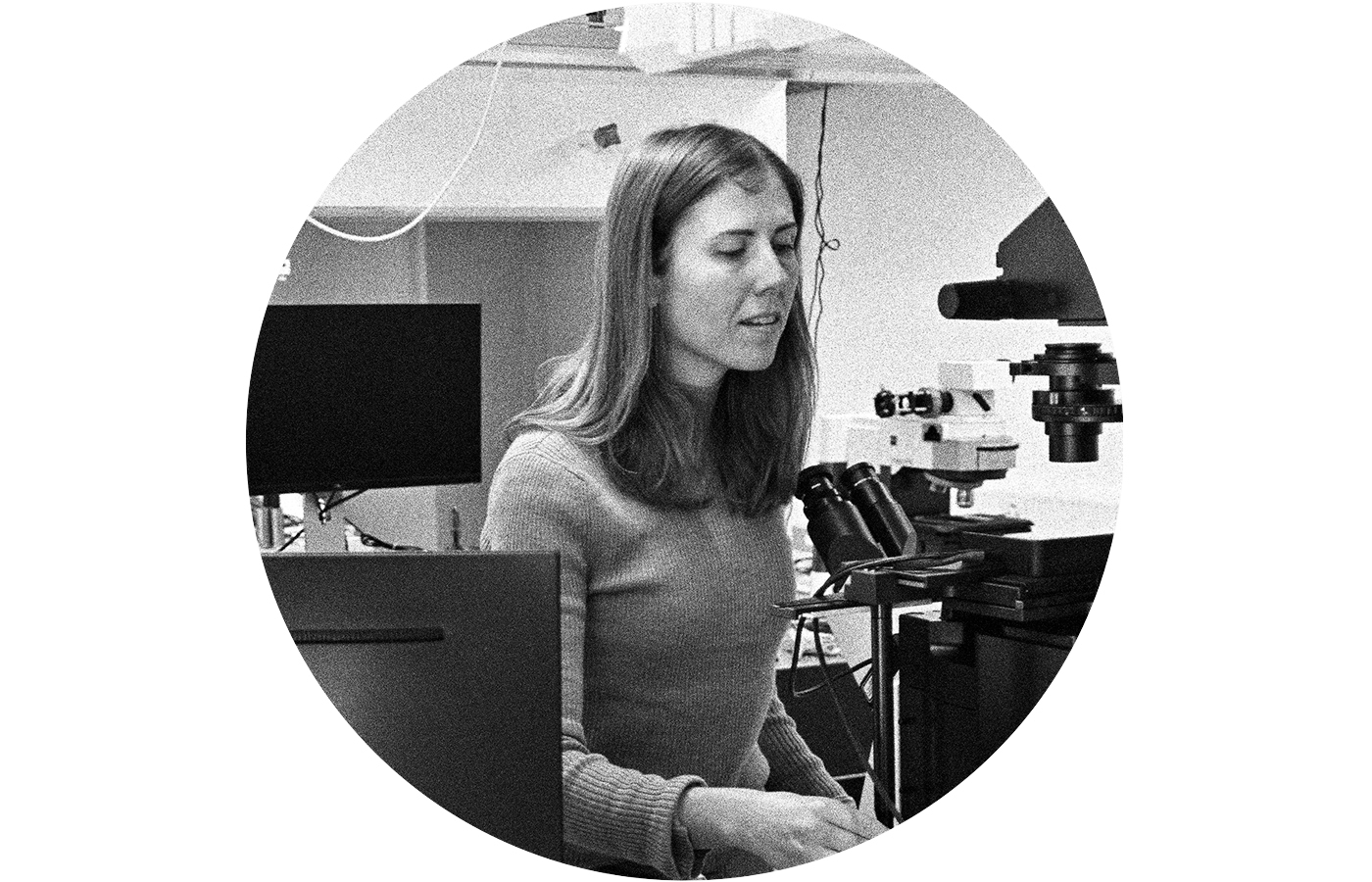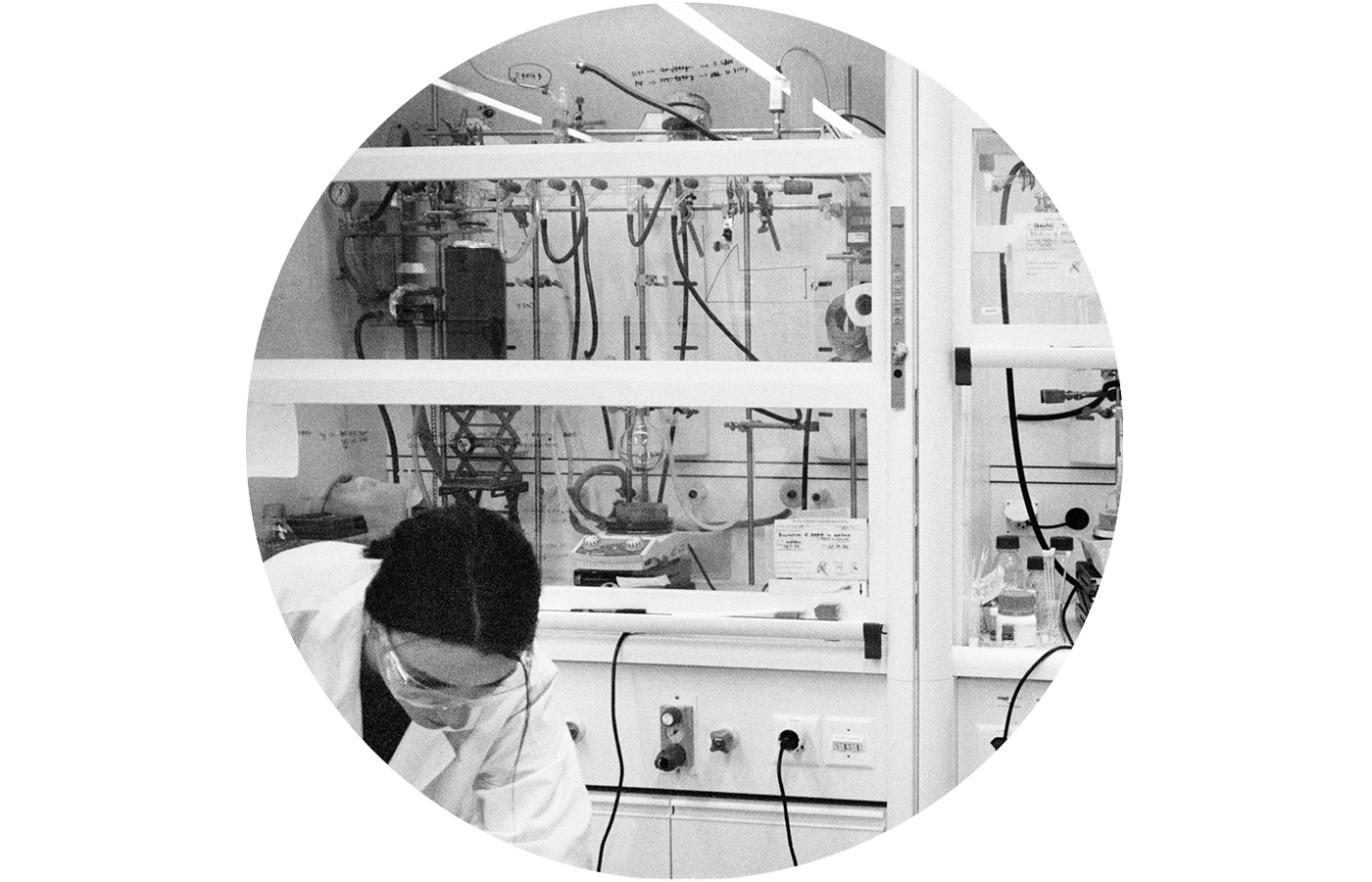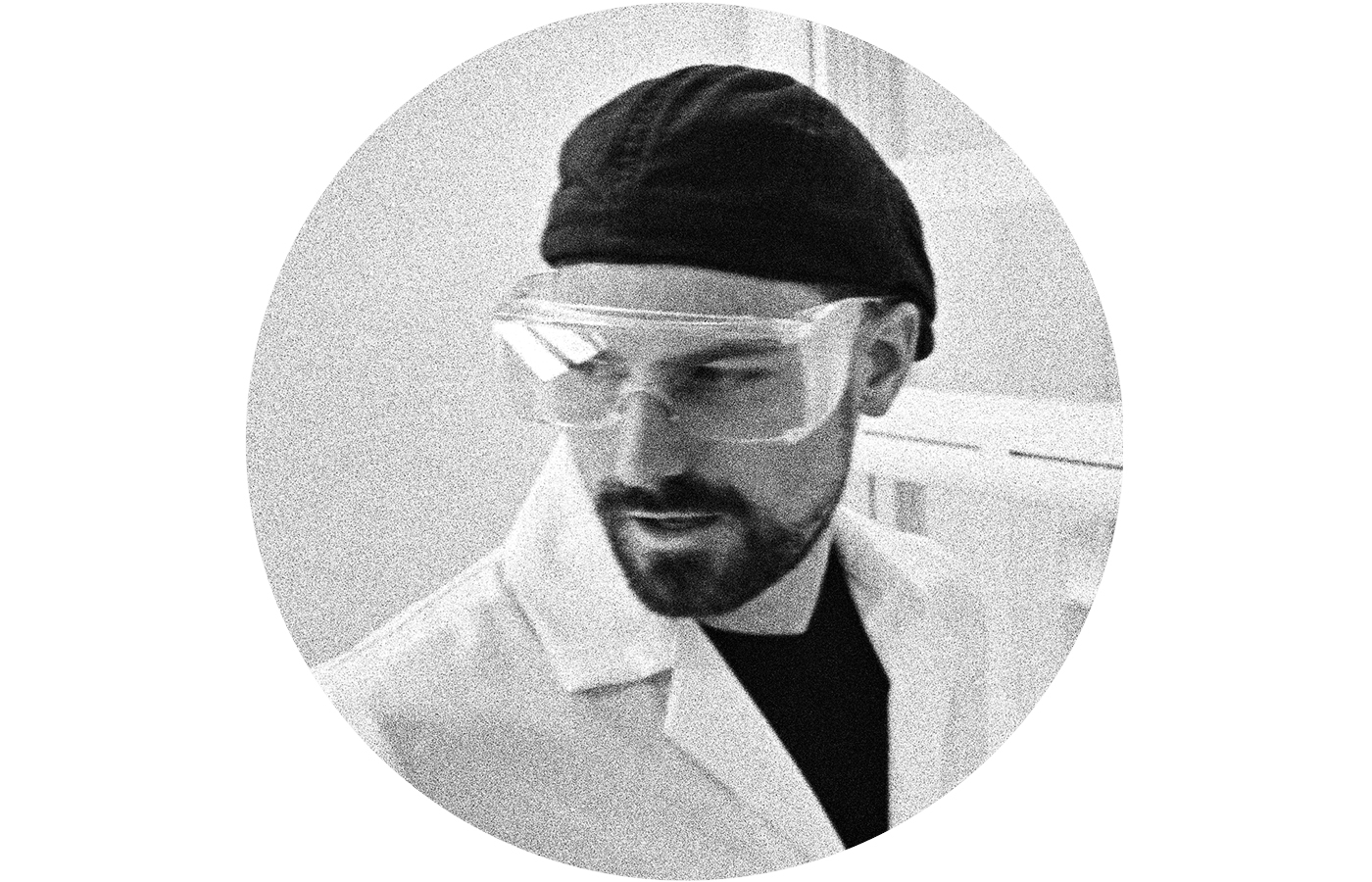scientists working in their environment -Adolphe Merkle Institute


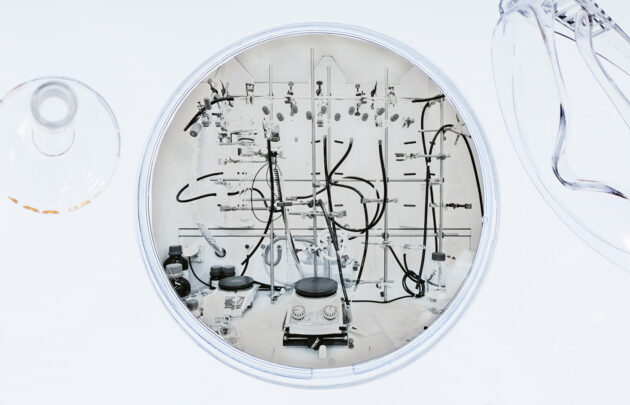
Mechano-responsive polymer sheet
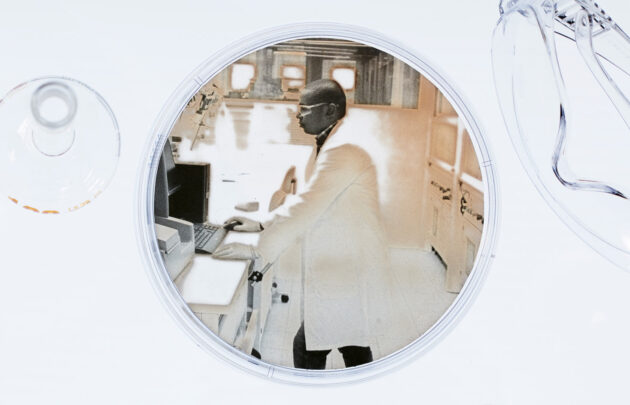
Mechano-responsive polymer sheet
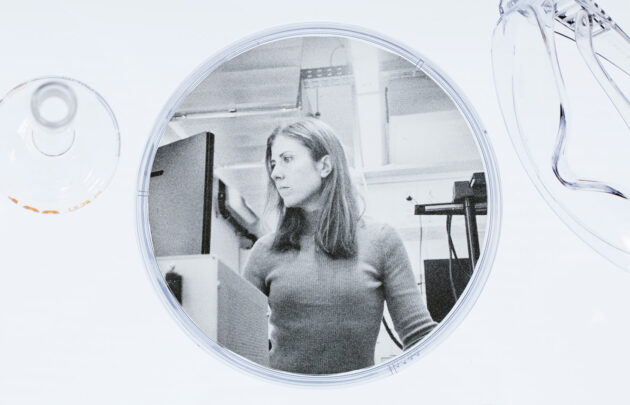


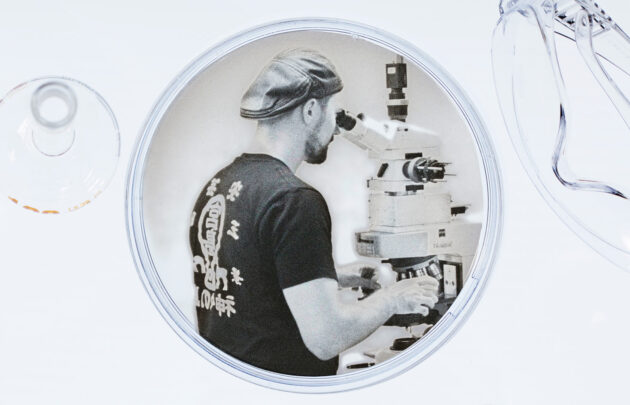
Mechano-responsive polymer sheet
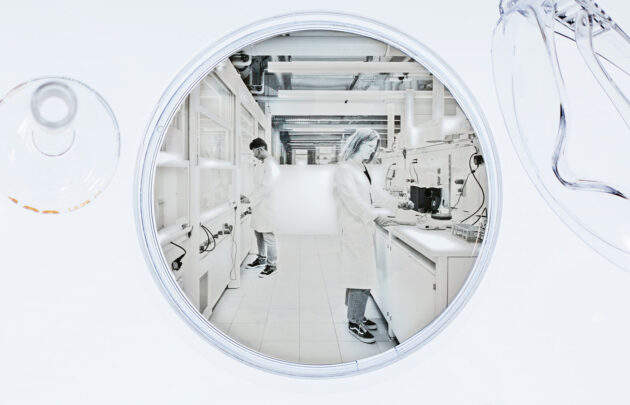
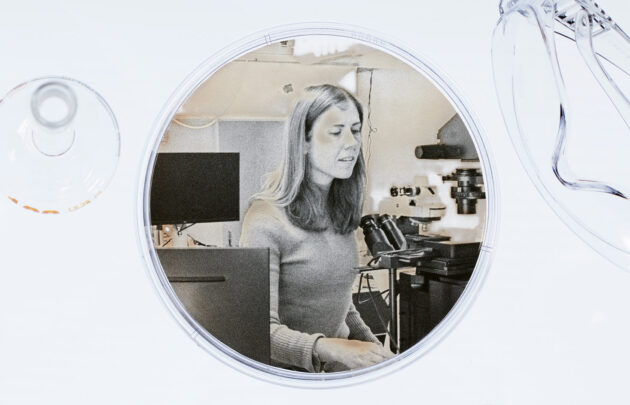
Mechano-responsive polymer sheet

Mechano-responsive polymer sheet

Mechano-responsive polymer sheet

Mechano-responsive polymer sheet

Mechano-responsive polymer sheet

Mechano-responsive polymer sheet
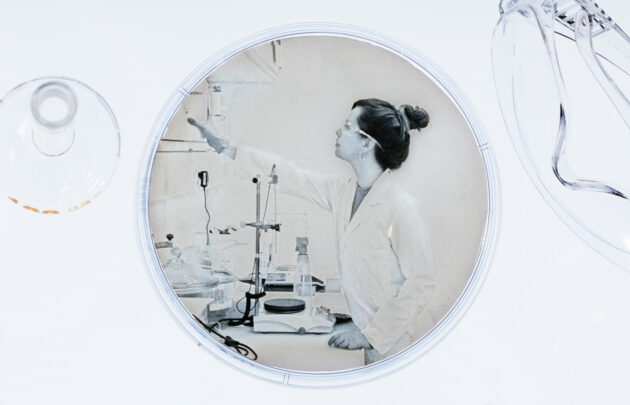
Mechano-responsive polymer sheet

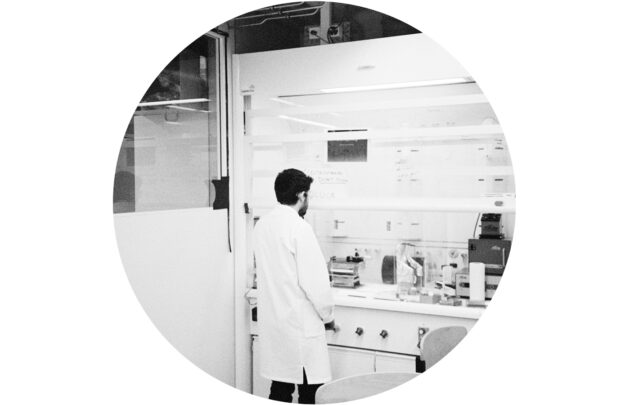


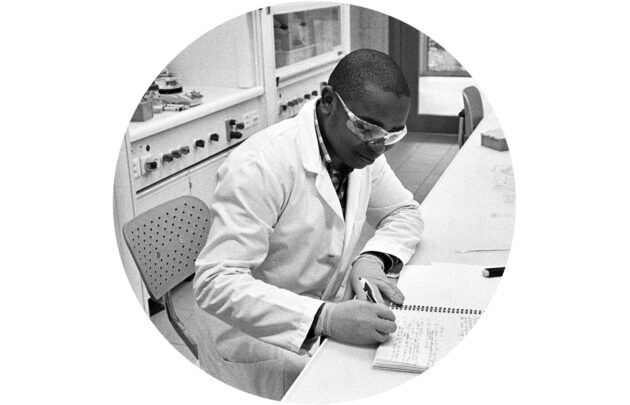

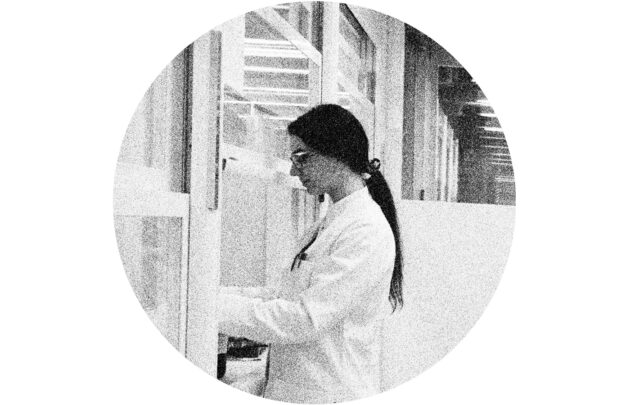

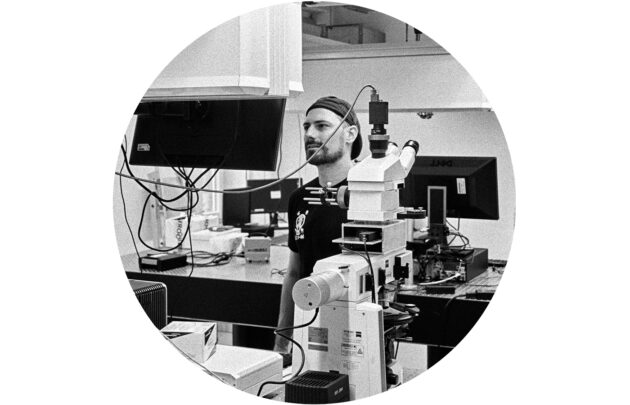
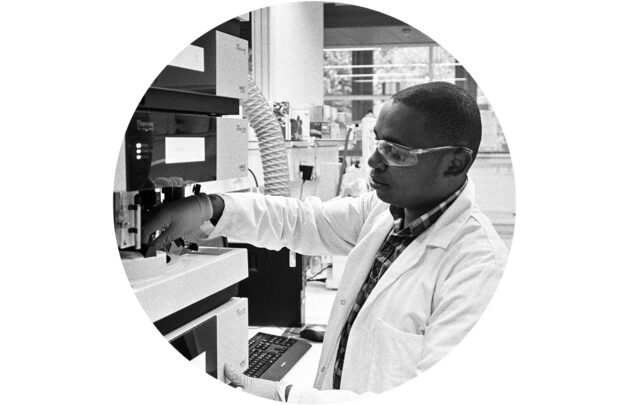
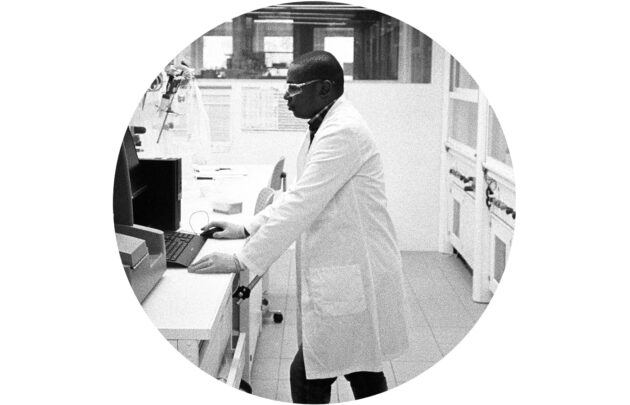
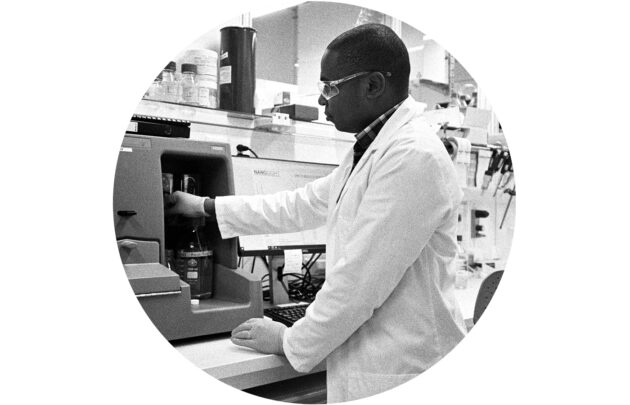
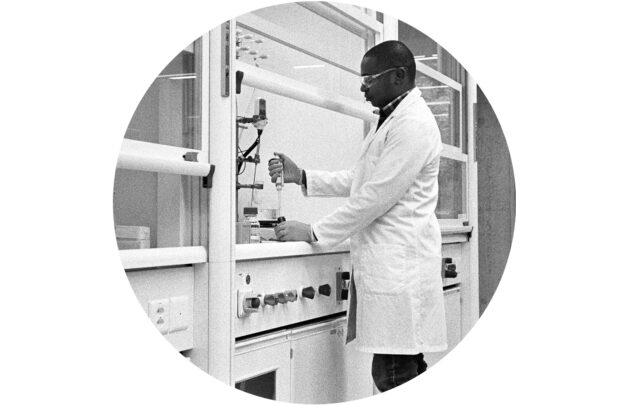

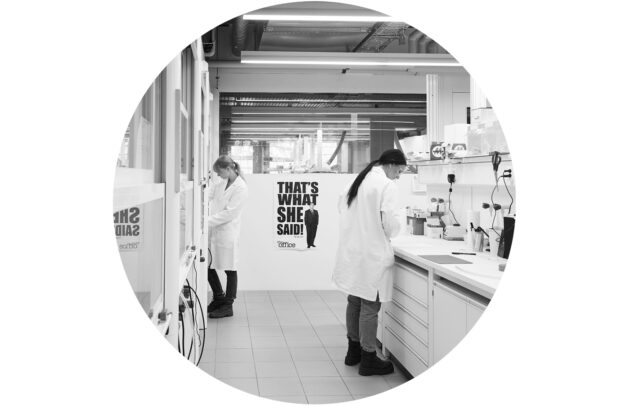
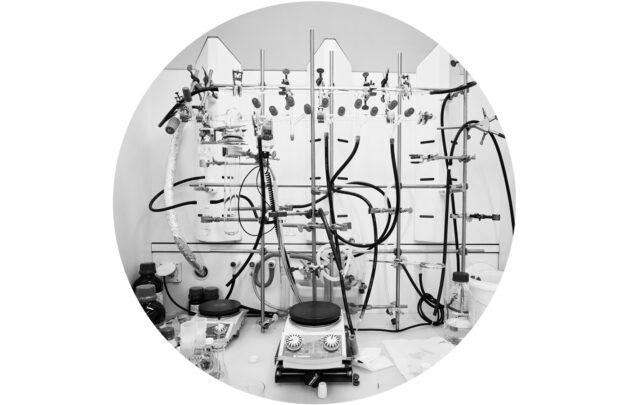
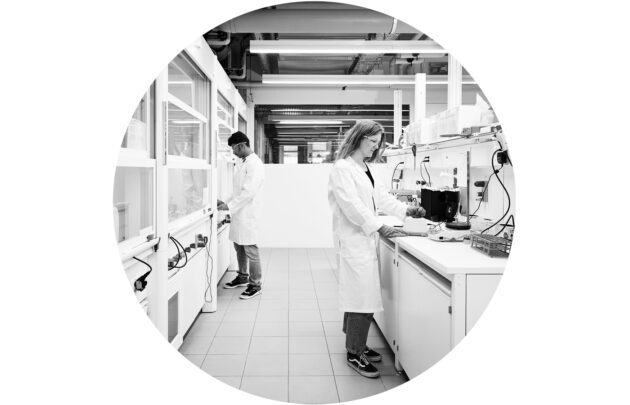

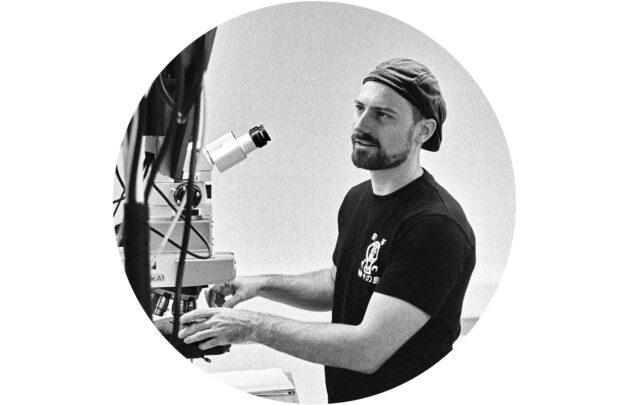

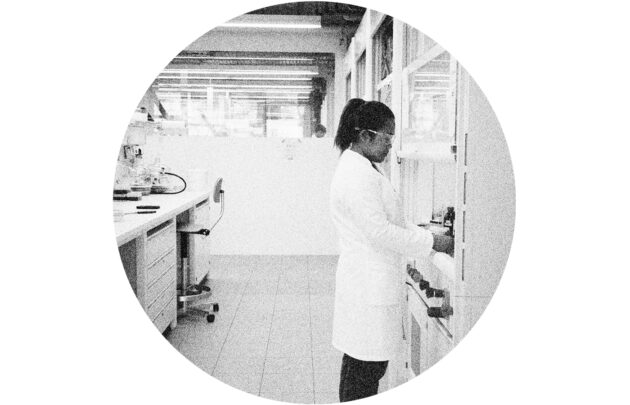
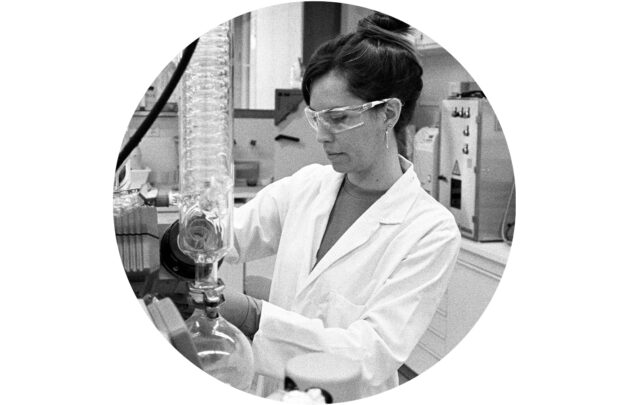
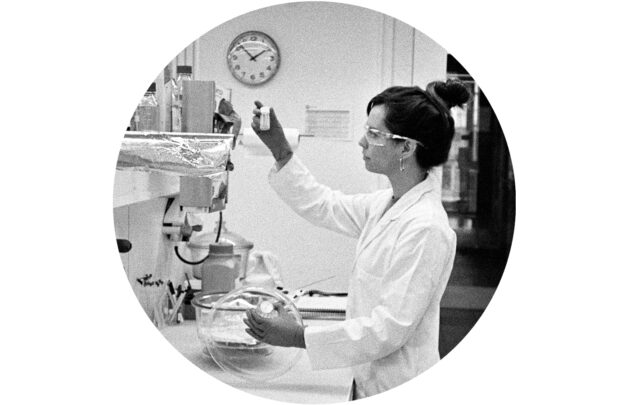
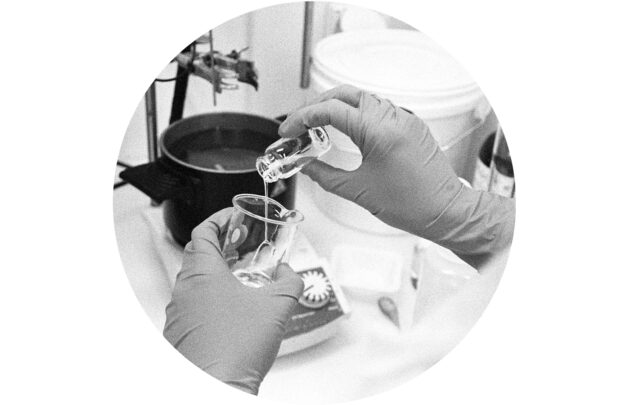
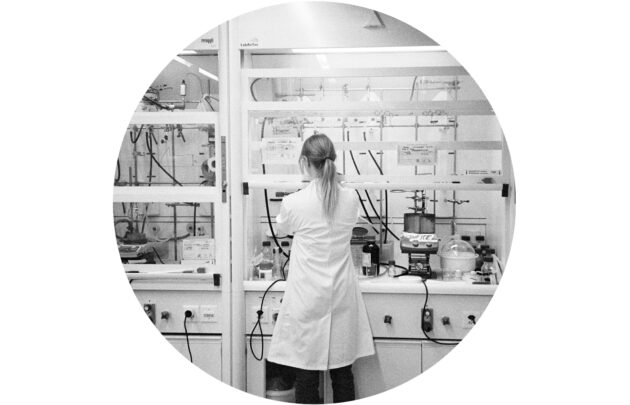


Editing Memory
Editing Memory maps how this bio-inspiration is then transformed by the scientific process into new concepts and materials by showing scientists at work and the physical nature of the experimental process. The photographic work in this project draws on the artist’s exploration of solitary spaces and showcases the laboratory through the lens of an artist and a scientist.
In this experiment, the team sought to print the artist’s photographs onto mechanochromic plastic screens prepared by the scientist. The plastic is of the material used in this case; the mechano- activation is monitored via changes in color under pressure. This allows visitors to the exhibition to “write” without ink on the photograph, to share their own reflections, and to edit the memory depicted in the photograph.
Moreover, the team was fascinated by the conceptual possibilities that arise when using a “non-standard” substrate for a photograph. The substrate or object brings its own history and provides a secondary layer of meaning to the photograph. For this experiment, the team purchased a liquid silver halide emulsion (Liquid Light) that can be coated on various substrates, including fabrics, plastics and ceramics. Once coated, the substrate can then be exposed and developed in a similar way to standard photo paper. Initial results revealed some technical challenges, like the adhesion of the images on to the polymer. To this end, the team purchased an oil-based polyurethane varnish and coated the polymeric materials with this, prior to depositing the emulsion. Due to persistent difficulties, we ultimately changed our approach and opted for digital printing, combining the images with the material in a different way.




